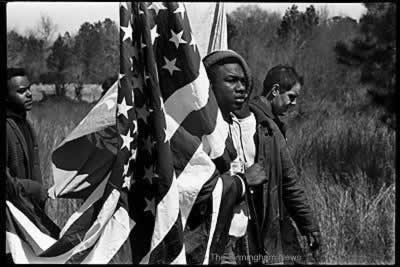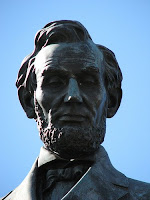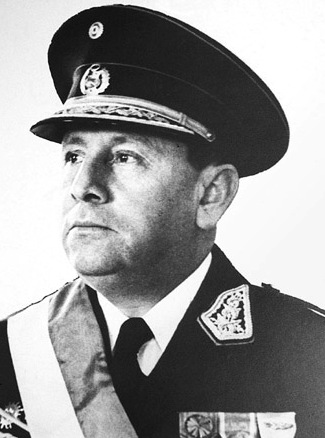1944-1947: Domestic Affairs
1944-1947
Part 1: Domestic Affairs
1944 Presidential Election

President Vernon Kirkman shaking hands with the Chief Justice on the day of his inauguration.
After four prosperous in somewhat uneventful years in office, President Vernon Kirkman and Vice President Buchholz were easily renominated by the Democratic Party for a second term. At the Republican National Convention in Richmond, Virginia the GOP was deeply divided and was unable to form a ticket until the twelfth ballot. The Republicans finally settled on Jasper V. Richards the amiable governor of Colorado and Harold McCann a former senator from Maine as his running mate. Many Republicans were less than thrilled by the lackluster nominees, which Leroy Connor, the progressive governor of Georgia, decried as “the only two Americans more boring than Kirkman and Buchholz”. Also to Connor’s frustration, the Republican platform shied away from embracing the growing civil rights movement preferring to play it safe and stick to their usual message of a more robust foreign policy and larger military. Many political scientists have argued that the Republicans selection of the stodgy 72 year old Richards to run against the 46 year old Kirkman, then the youngest president in American history, was unwise. Unsurprisingly, Kirkman beat Richards winning nearly 54% of the popular vote. At his second inauguration, Kirkman pledged that his administration would “maintain the harmony of the status-quo” words that years later Kirkman would come to regret.
The Civil Rights Movement Intensifies

Demonstrators in North Carolina
1945
During President Kirkman’s second term the American civil rights movement began to gain momentum fueled in part by Kirkman’s apparent indifference. Around the country an ever increasing number of Americans began demonstrating and challenging segregation. Reformers in the America South were joined by several notable activists from the states of Cuba and Santo Domingo where racial attitudes tended to be more progressive than in some areas of the mainland. The most famous of which would be Thomas Reynoso a lawyer from San Cristobal in Santo Domingo. A light skinned man of mixed decent with a gift for oratory, Reynoso was jailed numerous times as he refused to abide by the “Whites Only” signs which segregated most Southern public facilities. Although many segregationists dismissed Reynoso as a “damn miscegenated Carib” Reynoso always maintained that he was first and foremost an American and as such entitled to the same treatment as any purebred white man. Another aspect that aided the Civil Rights movement was the large number of nonwhite professional athletes and musicians who were during the 1940s coming to the forefront of American pop culture.
Building of the Lincoln Memorials

Color photograph from the Abraham Lincoln Memorial
After lobbying by the Republican congressional minority, President Kirkman secured the necessary funds from Congress for the construction of a memorial in Washington D.C. to honor Presidents Abraham and Robert Lincoln. Designed by the Puerto Rican architect Solomon Salcido, the twin Lincoln memorials were constructed south of the White House on the banks of the Potomac River. Made of white marble, the semicircular monuments each housed a seated statue of their respective president who faced each other across a 76 yard colonnade. President Kirkman dedicated the monuments himself, demonstrating that the Lincolns were no longer considered the nemeses of the Democrats but had finally taken their place in the pantheon of American heroes.
Birth of Groove Music

Starting in the early 40s, a new form of music began to crop up in several American cities. Known as Groove, it combined elements from Delta, Ruckus, Sawmill, and Gospel music. The genre’s popularity grew rapidly throughout the decade despite some traditionalists’ claims that it was a corrupting influence on America’s young people. Without a doubt, the most popular musician of this new style of music was Danny “Funky” Turpin. Turpin, who originally started as a Gospel singer in Atlanta, would sell millions of records earning him the title the “King of Groove”. That Turpin was black naturally didn’t sit well with segregationists but the widespread popularity of his music with white audiences is today seen as an important step towards integration.
Last edited:





